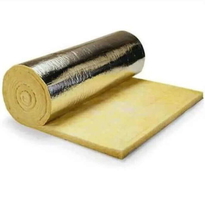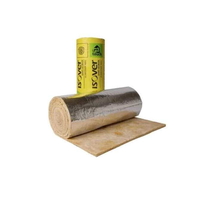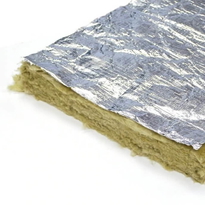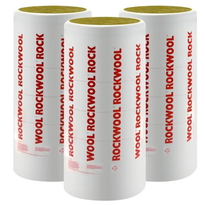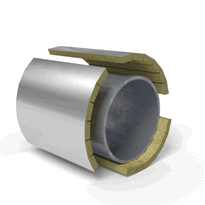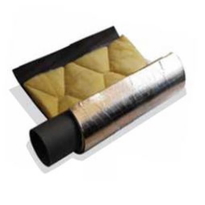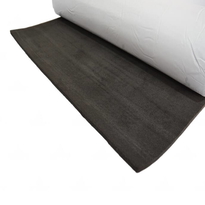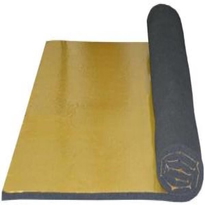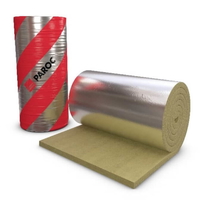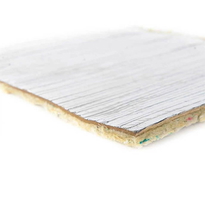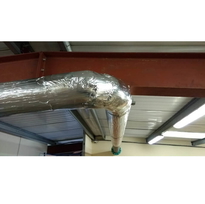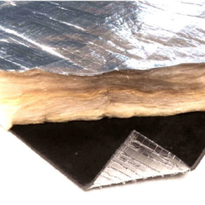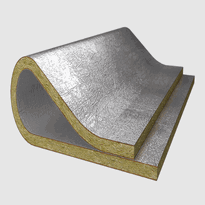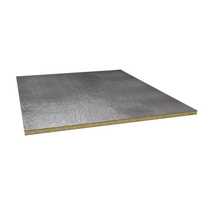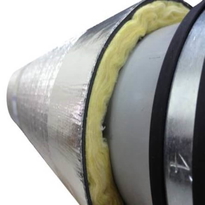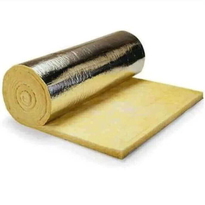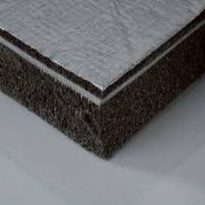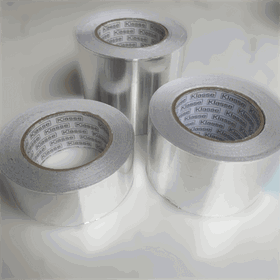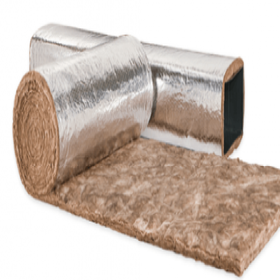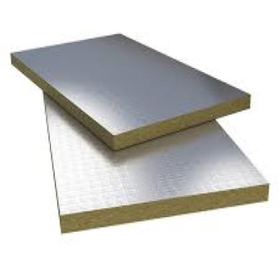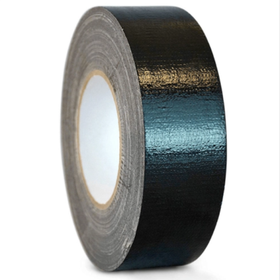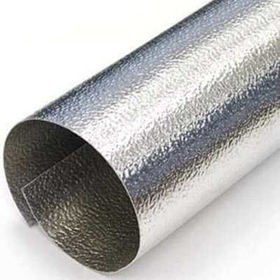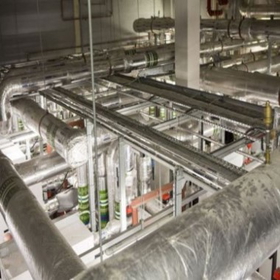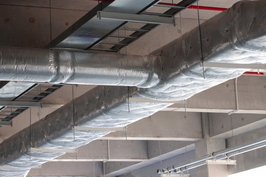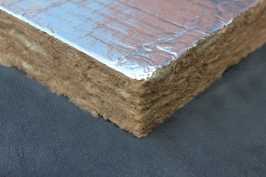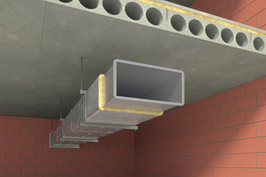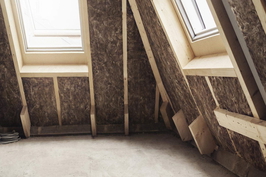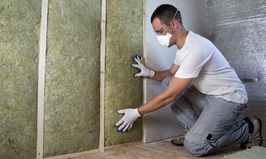Acoustic Duct Insulation
Our range includes high-quality Rockwool acoustic duct insulation, designed to insulate and enhance the performance of ventilation systems. Available in 25mm thickness, these aluminium-faced solutions provide superior acoustic and thermal benefits, helping to prevent heat loss and dampen sound in HVAC ducts.
Browse our collection of acoustic duct insulation products to find the perfect fit for your ductwork project. With fast UK delivery and competitive prices, we provide reliable solutions to improve the comfort and efficiency of your building’s ventilation system.
Similar Categories
How to Reduce Noise in Your HVAC System with Acoustic Duct Insulation
If you are looking for a way to improve the comfort and efficiency of your heating, ventilation, and air conditioning (HVAC) system, you might want to consider acoustic duct insulation. Acoustic duct insulation is a type of insulation that is designed to reduce the noise generated by the airflow and the equipment in your ductwork.
Noise can be a major source of annoyance and stress for many people, especially if you live in a noisy area or have sensitive ears. Noise can also affect the performance and lifespan of your HVAC system, as it can cause vibrations, wear and tear, and energy loss. Therefore, acoustic duct insulation can be a worthwhile investment for your home or business.
In this article, we will explain what acoustic duct insulation is, how it works, and what benefits it can offer. We will also introduce you to some of the best products for acoustic duct insulation that you can find on our website, Buy Insulation Online. By the end of this article, you will have a better understanding of acoustic duct insulation and how it can help you achieve a quieter and more efficient HVAC system.
What is Acoustic Duct Insulation?
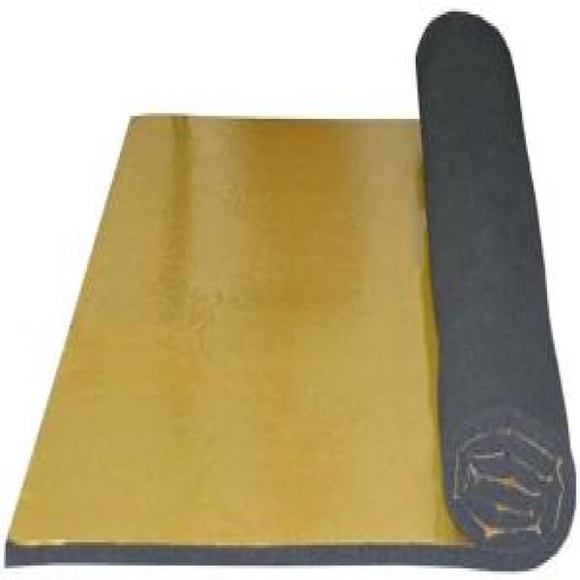 Acoustic duct insulation is a special type of insulation that is applied to the inside or outside of your ductwork to reduce the noise transmission from the air and the equipment. Acoustic duct insulation can be made of various materials, such as foam, mineral wool, fibreglass, or polyester.
Acoustic duct insulation is a special type of insulation that is applied to the inside or outside of your ductwork to reduce the noise transmission from the air and the equipment. Acoustic duct insulation can be made of various materials, such as foam, mineral wool, fibreglass, or polyester.
Acoustic duct insulation can have different properties, such as density, thickness, and sound absorption coefficient, which affect how well it can block or absorb sound waves. Acoustic duct insulation can also have different shapes and forms, such as rolls, sheets, wraps, or boards.
Acoustic duct insulation works by either reflecting or absorbing the sound waves that travel through the ductwork. Reflecting sound waves means bouncing them back to the source or to another direction, while absorbing sound waves means converting them into heat or other forms of energy. By reflecting or absorbing sound waves, acoustic duct insulation can reduce the noise level in your ductwork and in the surrounding areas.
How to Choose the Right Acoustic Duct Insulation for Your HVAC System?
There are many factors that you need to consider when choosing the right acoustic duct insulation for your HVAC system. Some of the most important factors are:
- The size and shape of your ductwork: You need to measure the length, width, and height of your ductwork to determine how much acoustic duct insulation you need and what form it should have. You also need to consider the shape of your ductwork, such as whether it is round, rectangular, or oval, and whether it has any bends, curves, or joints. You need to choose acoustic duct insulation that can fit your ductwork and cover it completely.
- The noise source and level: You need to identify the source and level of the noise that you want to reduce in your ductwork. The noise source can be either airborne or structure-borne. Airborne noise is the noise that comes from the air flowing through the ductwork, such as turbulence, whistling, or hissing. Structure-borne noise is the noise that comes from the equipment attached to the ductwork, such as fans, compressors, or motors. The noise level can be measured in decibels (dB), which is a unit of sound pressure. The higher the dB, the louder the noise. You need to choose acoustic duct insulation that can reduce the noise source and level that you have in your ductwork.
- The thermal performance and fire safety: You need to consider the thermal performance and fire safety of the acoustic duct insulation that you choose. Thermal performance refers to how well the acoustic duct insulation can prevent heat loss or gain in your ductwork, which can affect the energy efficiency and comfort of your HVAC system. Fire safety refers to how well the acoustic duct insulation can resist fire and smoke, which can affect the safety and health of your building and occupants. You need to choose acoustic duct insulation that can provide adequate thermal performance and fire safety for your ductwork.
What are the Benefits of Acoustic Duct Insulation?
Acoustic duct insulation can offer many benefits for your HVAC system and your building. Some of the main benefits are:
- Noise reduction: Acoustic duct insulation can significantly reduce the noise level in your ductwork and in the surrounding areas. This can improve the comfort and well-being of your occupants, as noise can cause stress, irritation, and sleep disturbance. Noise reduction can also enhance the privacy and confidentiality of your building, as noise can carry information and conversations. Noise reduction can also protect the hearing and health of your workers, as noise can cause hearing loss and other health problems.
- Energy efficiency: Acoustic duct insulation can also improve the energy efficiency of your HVAC system, as it can prevent heat loss or gain in your ductwork. This can reduce the energy consumption and cost of your HVAC system, as it can maintain the desired temperature and humidity in your building. Energy efficiency can also reduce the environmental impact of your HVAC system, as it can lower the greenhouse gas emissions and carbon footprint of your building.
- Equipment protection: Acoustic duct insulation can also protect your HVAC equipment from damage and deterioration, as it can reduce the vibrations and wear and tear caused by noise. This can extend the lifespan and performance of your HVAC equipment, as it can prevent breakdowns and malfunctions. Equipment protection can also save you money and time, as it can reduce the need for repairs and replacements.
What are the Best Products for Acoustic Duct Insulation?
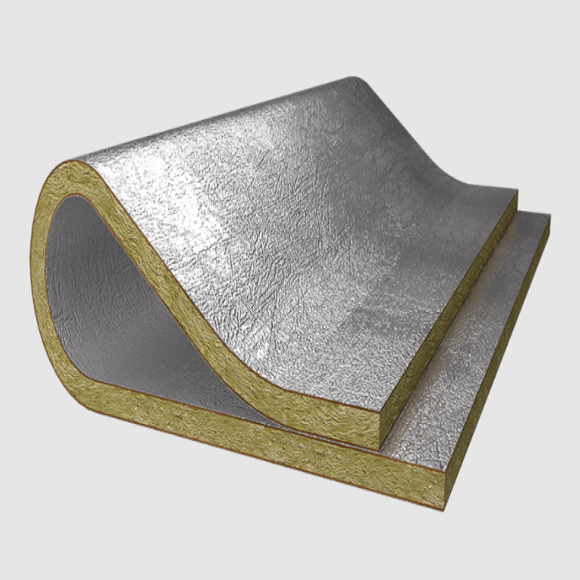 If you are looking for the best products for acoustic duct insulation, you have come to the right place. At Buy Insulation Online, we have a wide range of high-quality and affordable products for acoustic duct insulation that you can choose from. Here are some of the products that we recommend for your HVAC system:
If you are looking for the best products for acoustic duct insulation, you have come to the right place. At Buy Insulation Online, we have a wide range of high-quality and affordable products for acoustic duct insulation that you can choose from. Here are some of the products that we recommend for your HVAC system:
- Barafoam Acoustic Duct Insulation: Barafoam is a flexible and lightweight acoustic duct insulation that is made of polyurethane foam. Barafoam has a high sound absorption coefficient, which means it can effectively absorb airborne noise in your ductwork. Barafoam also has a low thermal conductivity, which means it can prevent heat loss or gain in your ductwork. Barafoam is easy to install and cut, as it comes in rolls or sheets that can fit any duct size and shape. Barafoam is also fire-resistant and self-extinguishing, which means it can provide fire safety for your ductwork. Barafoam is ideal for round or oval ducts, as it can conform to their shape and provide a smooth surface.
- GIS Polymeric Barrier Quilt Acoustic Insulation: GIS Polymeric Barrier Quilt is a multi-layered acoustic duct insulation that is made of polyester fibres and a polymeric barrier. GIS Polymeric Barrier Quilt has a high sound transmission loss, which means it can effectively block structure-borne noise in your ductwork. GIS Polymeric Barrier Quilt also has a low thermal conductivity, which means it can prevent heat loss or gain in your ductwork. GIS Polymeric Barrier Quilt is easy to install and cut, as it comes in rolls that can fit any duct size and shape. GIS Polymeric Barrier Quilt is also fire-resistant and self-extinguishing, which means it can provide fire safety for your ductwork. GIS Polymeric Barrier Quilt is ideal for rectangular or square ducts, as it can provide a rigid and durable surface.
- Rockwool Techwrap Acoustic Duct Insulation: Rockwool Techwrap is a robust and versatile acoustic duct insulation that is made of mineral wool and aluminium foil. Rockwool Techwrap has a high sound absorption coefficient and a high sound transmission loss, which means it can effectively reduce both airborne and structure-borne noise in your ductwork. Rockwool Techwrap also has a high thermal performance, which means it can prevent heat loss or gain in your ductwork. Rockwool Techwrap is easy to install and cut, as it comes in wraps that can fit any duct size and shape. Rockwool Techwrap is also fire-resistant and non-combustible, which means it can provide fire safety for your ductwork. Rockwool Techwrap is ideal for any duct shape, as it can provide a strong and flexible surface.
Conclusion
Acoustic duct insulation is a great way to reduce noise in your HVAC system and improve its comfort, efficiency, and protection. Acoustic duct insulation can be made of different materials, have different properties, and work in different ways to reflect or absorb sound waves. Acoustic duct insulation can also provide thermal performance and fire safety for your ductwork.
Acoustic duct insulation can offer many benefits for your HVAC system and your building, such as noise reduction, energy efficiency, and equipment protection. If you are looking for the best products for acoustic duct insulation, you can find them on our website, Buy Insulation Online.
We have a wide range of high-quality and affordable products for acoustic duct insulation that can suit your needs and preferences. You can browse our products and order them online with ease and convenience. We also offer fast and reliable delivery service for your convenience.
If you have any questions or concerns about acoustic duct insulation or any of our products, you can contact us anytime and we will be happy to assist you. Thank you for choosing Buy Insulation Online for your acoustic duct insulation needs. We hope you enjoy a quieter and more efficient HVAC system with our products.
Frequently Asked Questions
Q: Can acoustic duct insulation also provide thermal insulation?
A: Yes, some acoustic duct insulation products are designed to provide both thermal and acoustic insulation. This means they can help control temperature fluctuations in addition to reducing noise transmission.
Q: What are the differences between thermal and acoustic duct insulation?
A: Thermal duct insulation is primarily focused on preventing heat loss or gain, while acoustic duct insulation is tailored to minimize sound transmission. Both types of insulation serve different purposes in HVAC systems.
Q: Are there specific types of ductwork that benefit most from acoustic insulation?
A: Any type of ductwork can benefit from acoustic insulation, but systems with high air velocity or those located in noise-sensitive areas can particularly benefit from the noise reduction provided by acoustic insulation.
Q: How can I identify if my HVAC system needs acoustic duct insulation?
A: Signs that your HVAC system may benefit from acoustic duct insulation include excessive noise transmission through the ductwork, especially in areas where quiet is desired, or if the system is located close to occupied spaces.
Q: What should I consider when choosing acoustic duct insulation products?
A: When choosing acoustic duct insulation, consider the acoustic performance of the insulation, its compatibility with your HVAC system, the ease of installation, and whether it also offers thermal insulation properties to meet your specific needs.
